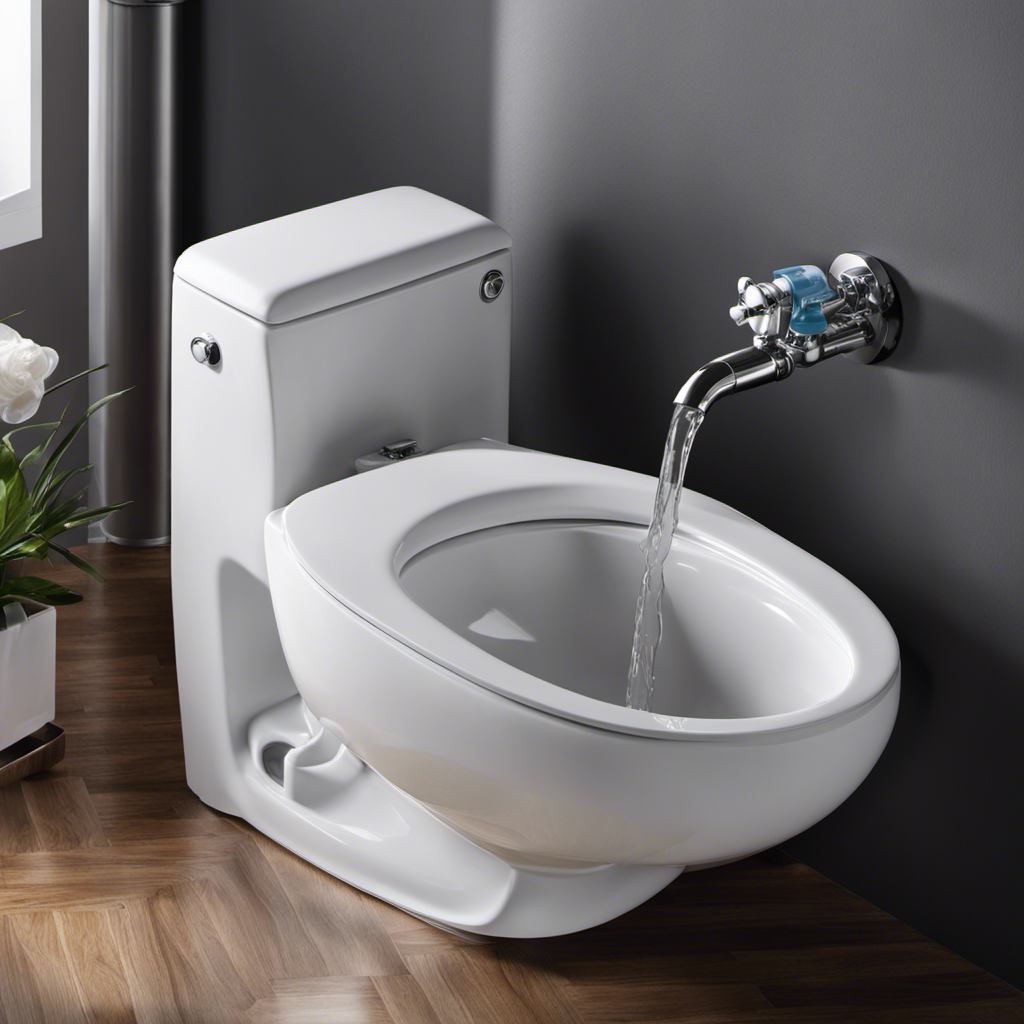Have you ever been curious about the beginnings of our contemporary toilets?
Well, let us take you on a journey through time and explore the fascinating history of the first toilet.
From ancient Mesopotamia to the innovative designs of the Romans, we will delve into the evolution of sanitation practices.
Join us as we uncover the secrets of medieval chamber pots and the groundbreaking invention of the flushing toilet by Sir John Harrington.
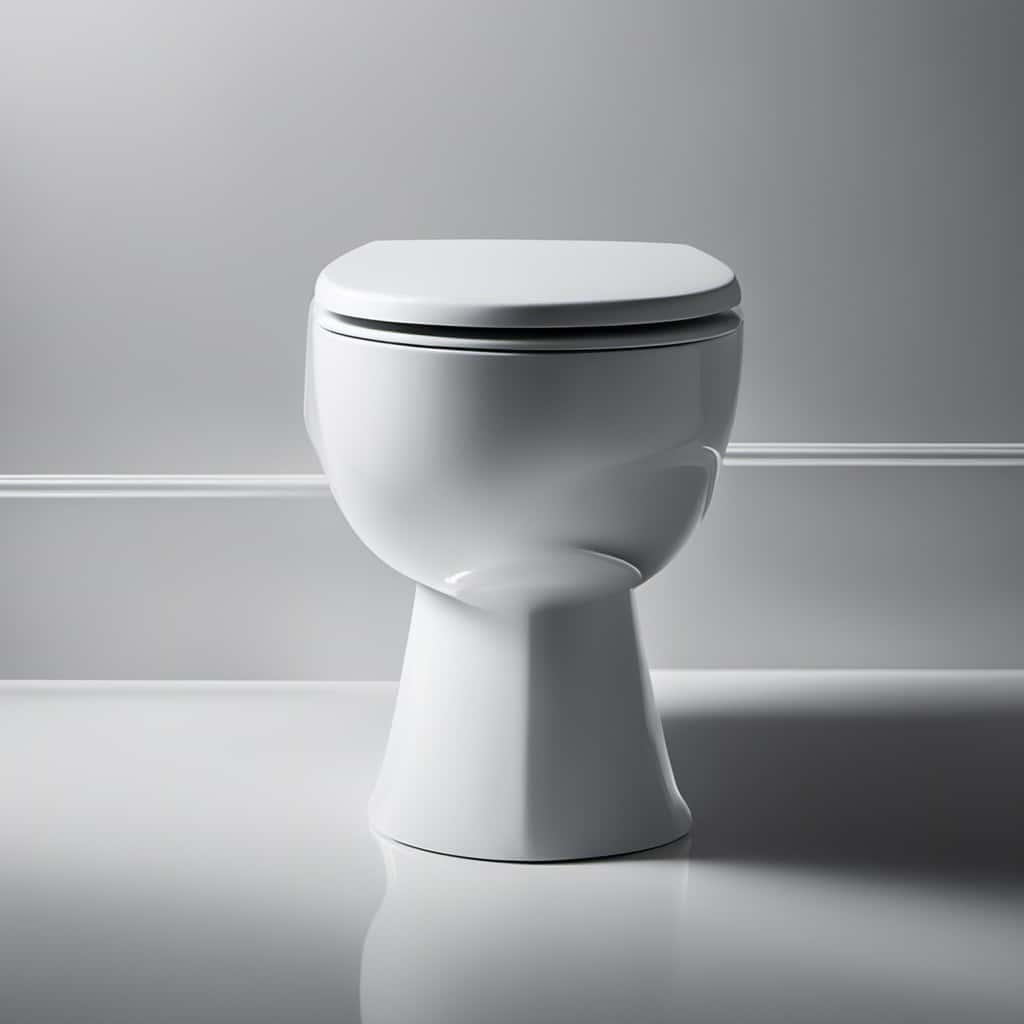
Get ready to become a master of toilet history!
Key Takeaways
- Ancient civilizations like the Indus Valley Civilization and Mesopotamians had advanced sanitation practices and developed sophisticated plumbing systems.
- The first toilets in Mesopotamia were made of stone or clay with a chute for waste disposal, and waste would be collected in deep pits and flushed away using water from rivers or canals.
- The Indus Valley Civilization had well-developed sewage systems with brick-lined drains and underground channels that efficiently carried away waste.
- The Romans constructed elaborate public toilets called ‘latrines’ near bathhouses, which had stone or marble seats with holes and channels for waste disposal.
Ancient Sanitation Practices
In ancient times, we relied on innovative methods to maintain sanitation and hygiene. Early plumbing techniques played a crucial role in ensuring clean water supply and efficient waste disposal. One of the most fascinating aspects of ancient sanitation practices were the ancient public toilets.
Ancient civilizations, such as the Indus Valley Civilization and the Romans, developed sophisticated plumbing systems to manage waste. In the Indus Valley Civilization, which thrived around 2500 BCE, archaeologists have discovered evidence of advanced drainage systems and indoor toilets. These early plumbing techniques utilized clay pipes and sewers to transport waste away from residential areas.
The Romans, known for their engineering prowess, constructed elaborate public toilets known as ‘latrines’. These public toilets were often built near bathhouses and included rows of stone or marble seats with holes, allowing multiple users at a time. Underneath the seats, a network of channels and drains carried away the waste into sewers or nearby rivers.

These ancient public toilets were a testament to the importance placed on sanitation and hygiene in ancient societies. They not only provided a means for waste disposal but also contributed to the overall well-being of the community. The development of early plumbing techniques and the construction of public toilets were significant milestones in the advancement of sanitation practices in ancient times.
Early Toilets in Mesopotamia
When examining the early toilets in Mesopotamia, it’s important to consider ancient toilet designs, waste disposal methods, and sanitation practices in antiquity. These three points shed light on the evolution of sanitation and hygiene in one of the earliest civilizations.
By analyzing the design of these early toilets, we can gain insight into the level of sophistication and technological advancements achieved by the Mesopotamians.
Additionally, understanding their waste disposal methods and sanitation practices provides a glimpse into their daily lives and the importance they placed on cleanliness and public health.
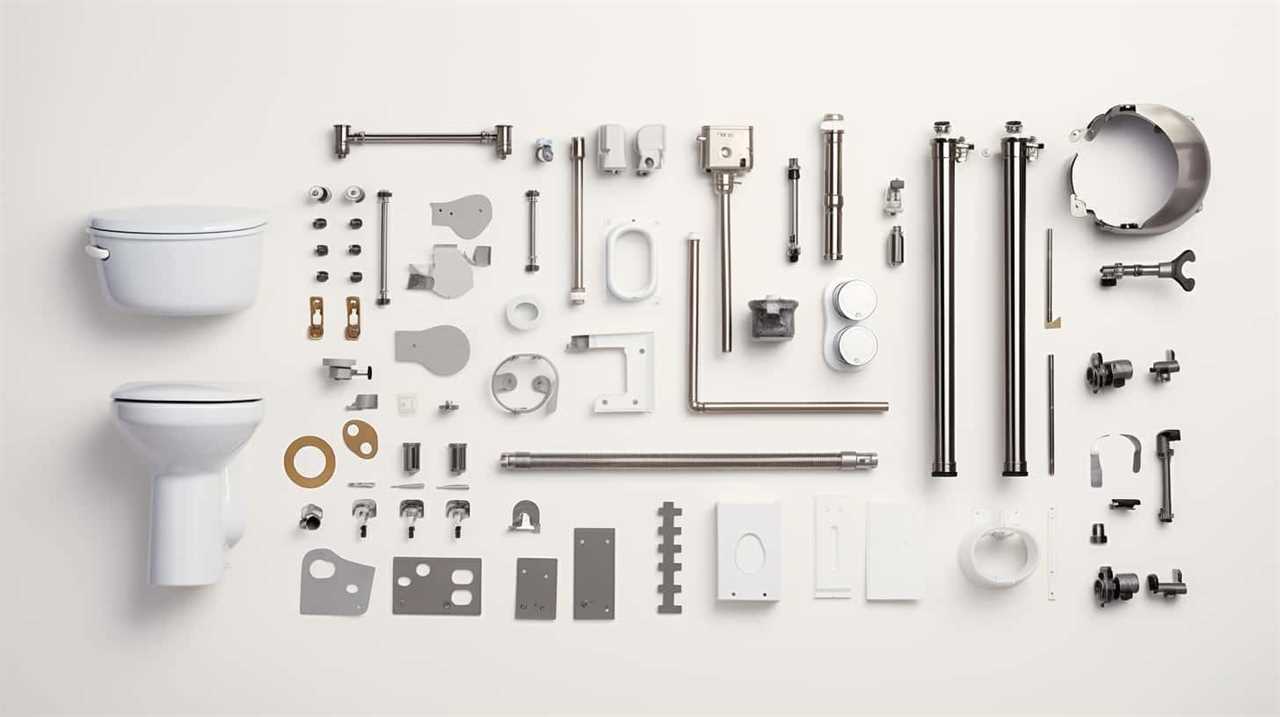
Ancient Toilet Designs
Exploring ancient toilet designs, we discovered the early toilets in Mesopotamia were remarkably innovative. The people of Mesopotamia, often referred to as the cradle of civilization, were pioneers in toilet technology and had an advanced understanding of historical plumbing.
Their toilets, known as ‘garderobes,’ were built with a seat positioned over a deep pit, allowing for waste to be collected and disposed of effectively. These early toilets were often made of stone or clay and were designed with a chute or channel to direct waste into the pit.
It’s fascinating to see how these ancient civilizations developed such sophisticated methods of waste disposal. Moving forward, let’s explore the various waste disposal methods employed by different cultures throughout history.
Waste Disposal Methods
Moving forward, let’s delve into the waste disposal methods employed by the people of Mesopotamia and explore what their early toilets looked like.

In the evolution of toilets, the ancient Mesopotamians played a crucial role by developing sophisticated waste management systems. These early toilets consisted of simple structures, usually made of clay or stone, with a hole in the center. Waste would be deposited into the hole and then flushed away using water from nearby rivers or canals.
This innovative approach to waste disposal demonstrates the advanced engineering skills of the Mesopotamians and their understanding of hygiene. Although these early toilets may seem primitive by modern standards, they laid the foundation for the development of more sophisticated sanitation systems and the evolution of modern waste management.
Sanitation Practices in Antiquity
To understand the sanitation practices in antiquity, let’s take a closer look at the early toilets used in Mesopotamia. These ancient toilets reveal interesting insights into toilet hygiene practices and the evolution of sanitation technology. Here are four key points to consider:
- Early toilets in Mesopotamia were simple pits dug into the ground, lined with bricks or stones. Waste would accumulate in these pits until they were filled and then covered with soil.
- Some toilets in Mesopotamia featured a primitive form of flushing. Water was poured into the pit to wash away the waste, improving cleanliness and reducing odors.
- Toilet hygiene was important in Mesopotamian culture. Archaeological evidence suggests that they used water, ash, and even herbal mixtures to clean themselves after using the toilet.
- The development of these early toilets marked the beginning of a long journey towards more advanced sanitation systems, paving the way for improved public health in ancient civilizations.
With a better understanding of the early toilets in Mesopotamia, we can now explore the sanitary systems of the Indus Valley Civilization.

The Indus Valley Civilization’s Sanitary Systems
Our research into the Indus Valley Civilization’s sanitary systems has revealed a remarkable level of sophistication and organization. The Indus Valley people, who lived around 2500 BCE in what’s now modern-day Pakistan and northwest India, had a well-developed sewage system and advanced toilet technology. Excavations of their cities, such as Mohenjo-daro and Harappa, have uncovered evidence of a complex network of drains and sewers that were designed to efficiently carry away waste and prevent contamination of water sources.
The Indus Valley sewage system consisted of interconnected brick-lined drains that ran beneath the streets, connecting to larger underground channels. These drains were equipped with manholes for maintenance and access. The toilets in the Indus Valley Civilization were remarkably advanced for their time. They were built with a simple yet effective design, featuring a brick or stone seat with a hole that led directly into the sewer system.
This level of sophistication in sanitation practices demonstrates the advanced planning and engineering skills of the Indus Valley Civilization. It’s clear that they recognized the importance of proper waste disposal and took proactive measures to ensure the cleanliness and health of their cities.
With this understanding of the Indus Valley’s sanitary systems, it becomes evident that their innovations laid the foundation for later advancements in toilet design. Transitioning to the subsequent section about Roman innovations in toilet design, we can see how different civilizations built upon the knowledge and technologies of their predecessors to create even more sophisticated sanitation systems.

Roman Innovations in Toilet Design
After examining the sophisticated sanitary systems of the Indus Valley Civilization, it’s evident that Roman innovations in toilet design further advanced the field of sanitation. The Romans were pioneers in developing sewer systems that efficiently transported waste away from populated areas.
Here are four notable Roman innovations in toilet design:
- Aqueducts: The Romans built vast networks of aqueducts to supply water to their cities, which were crucial for the functioning of public latrines. These aqueducts provided a constant flow of water for flushing waste away.
- Public Latrines: Ancient Rome had public latrines that were accessible to all citizens. These latrines featured rows of seats with holes, and they were often located near bathhouses or amphitheaters. The waste would be flushed away through a complex network of sewers.
- Flush Toilets: The Romans developed the concept of flush toilets, called ‘latrinae,’ which incorporated a water flow system to remove waste. These toilets were often found in wealthier households and public buildings.
- Sewer Systems: Roman sewer systems were engineering marvels, featuring large underground tunnels with interconnected pipes. These systems effectively carried waste away from the city, preventing the spread of diseases.
Roman innovations in toilet design revolutionized sanitation practices and laid the foundation for modern sewage systems. Their advancements in sewer systems and public latrines ensured cleaner and healthier living conditions for the population.
Medieval Chamber Pots and Garderobes
In the medieval era, people relied on the convenience of their own chamber pots and garderobes for their sanitary needs. Medieval hygiene practices were far from ideal, and the evolution of chamber pots played a crucial role in addressing this issue.
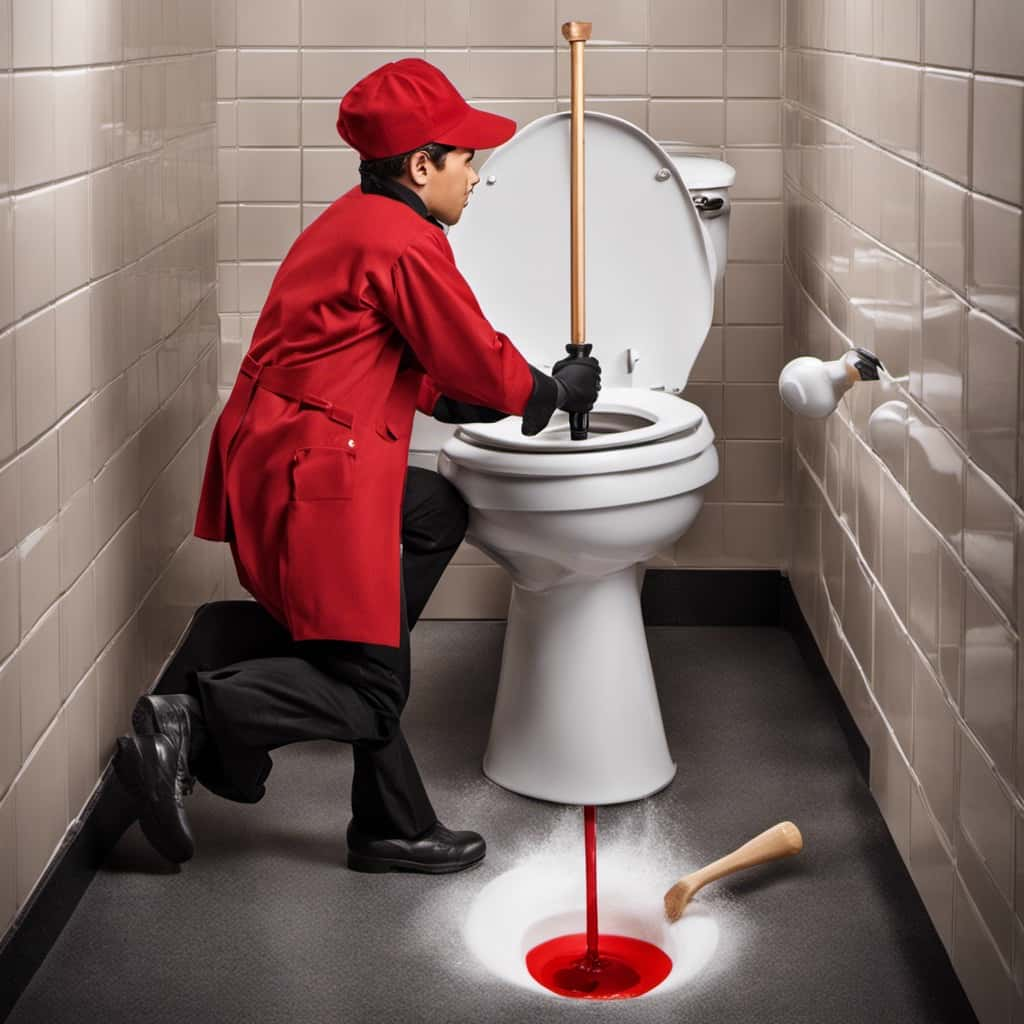
Chamber pots were essentially portable toilets used for urination and defecation. They were made of various materials such as metal, ceramic, or even wood. These vessels were usually kept under the bed or in a designated corner of the room for easy access. However, their use was not limited to the privacy of one’s home. In fact, chamber pots were commonly used in public spaces, like taverns and inns, where people would relieve themselves without leaving their seats.
To highlight the evolution of chamber pots during the medieval period, let’s take a look at the table below:
| Chamber Pot Type | Material | Additional Features |
|---|---|---|
| Early Medieval | Wood | Basic, no lid |
| High Medieval | Ceramic | Decorative patterns |
| Late Medieval | Metal | Hinged lid |
| Late Medieval | Porcelain | Elaborate designs |
As medieval society progressed, so did the design and materials used in chamber pots. The introduction of lids helped contain odors, while elaborate designs in porcelain showcased the wealth and status of the owner.
However, despite these advancements in chamber pot technology, they were still unsanitary and required manual emptying. This led to the development of the first flushing toilet, which we will explore in the subsequent section.
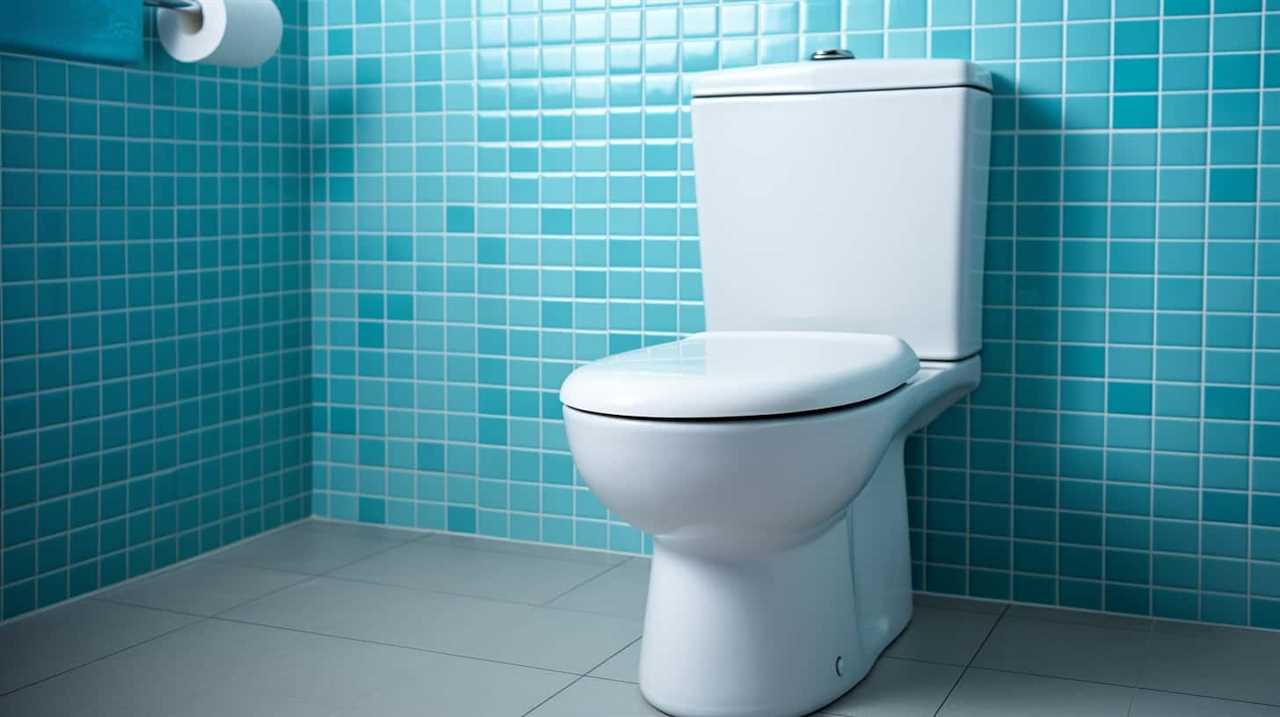
Transition: With the limitations of chamber pots becoming increasingly apparent, it was time for a revolutionary invention that would change the way we think about sanitation – Sir John Harrington’s flushing toilet.
The First Flushing Toilet: Sir John Harrington’s Invention
Continuing from the previous discussion on medieval chamber pots and their limitations, let’s now delve into the revolutionary invention that would forever change sanitation: Sir John Harrington’s flushing toilet.
In the late 16th century, Harrington, an English courtier and poet, devised a system that utilized water to flush waste away, ensuring cleaner and more hygienic conditions.
The impact of Harrington’s invention was significant, as it marked a major shift in how waste was managed. Here are four key aspects of his flushing toilet and its subsequent influence:
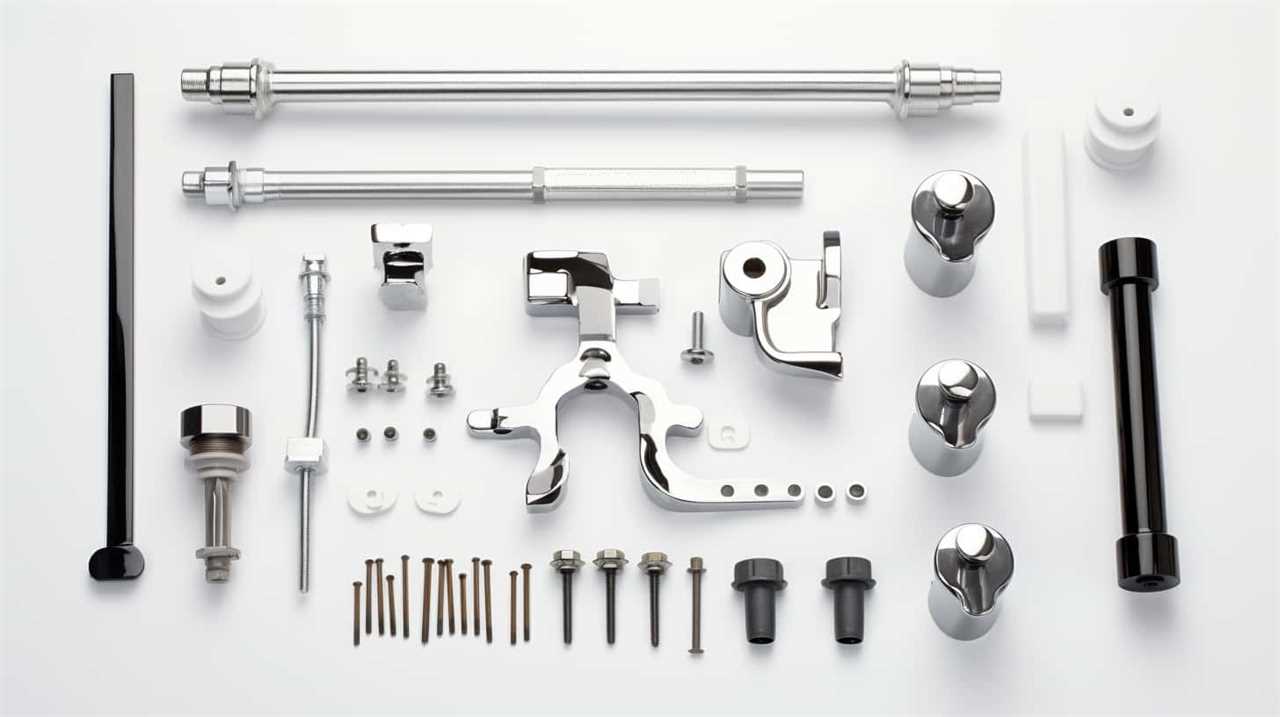
- Water-powered flush: Harrington’s toilet featured a cistern that held water, which could be released with the pull of a lever. This mechanism created a forceful flush that efficiently removed waste.
- Improved hygiene: By introducing water into the equation, Harrington’s invention greatly improved hygiene compared to the use of chamber pots. The flushing action reduced odors and the spread of diseases.
- Invention adoption: Although Harrington’s flushing toilet wasn’t widely adopted during his time, his invention laid the foundation for future developments in sanitation technology.
- Modern adaptations: Harrington’s concept laid the groundwork for the modern flushing toilet that we use today. Over the centuries, countless improvements and adaptations have been made, ensuring higher efficiency, water conservation, and enhanced user comfort.
Sir John Harrington’s invention had a profound impact on sanitation practices. Its adoption and subsequent modern adaptations have led to improved hygiene, better waste management, and a more comfortable bathroom experience for millions of people worldwide.
Frequently Asked Questions
What Were the Sanitation Practices Like in Ancient Egypt?
Sanitation practices in ancient Egypt were quite advanced for their time. Waste disposal was a key concern, and the Egyptians developed various methods to maintain cleanliness. They constructed elaborate drainage systems to remove wastewater from their homes and streets.
Additionally, they’d designated areas for waste disposal, such as refuse pits and dumpsites. These practices demonstrate the Egyptians’ understanding of the importance of hygiene and their commitment to creating a clean and healthy environment.
How Did Ancient China Handle Their Waste Management?
Ancient China had a well-developed waste management system. They built sophisticated sewage systems that efficiently removed waste from cities and towns. These systems included underground channels and drains that directed waste to designated areas outside the city.

The waste was then used as fertilizer for agricultural purposes. This evidence suggests that ancient China recognized the importance of sanitation and implemented effective waste management practices to maintain cleanliness and hygiene in their communities.
Were There Any Other Notable Early Toilet Inventions Apart From Those Mentioned in the Article?
When it comes to early toilet inventions and innovative sanitation practices, there were indeed several notable ones apart from those mentioned in the article.
These inventions and practices played a crucial role in improving hygiene and waste management throughout history.
From ancient civilizations like the Indus Valley, where sophisticated sewage systems were developed, to the Romans who introduced public toilets with running water, these early innovations set the foundation for the modern toilets we use today.
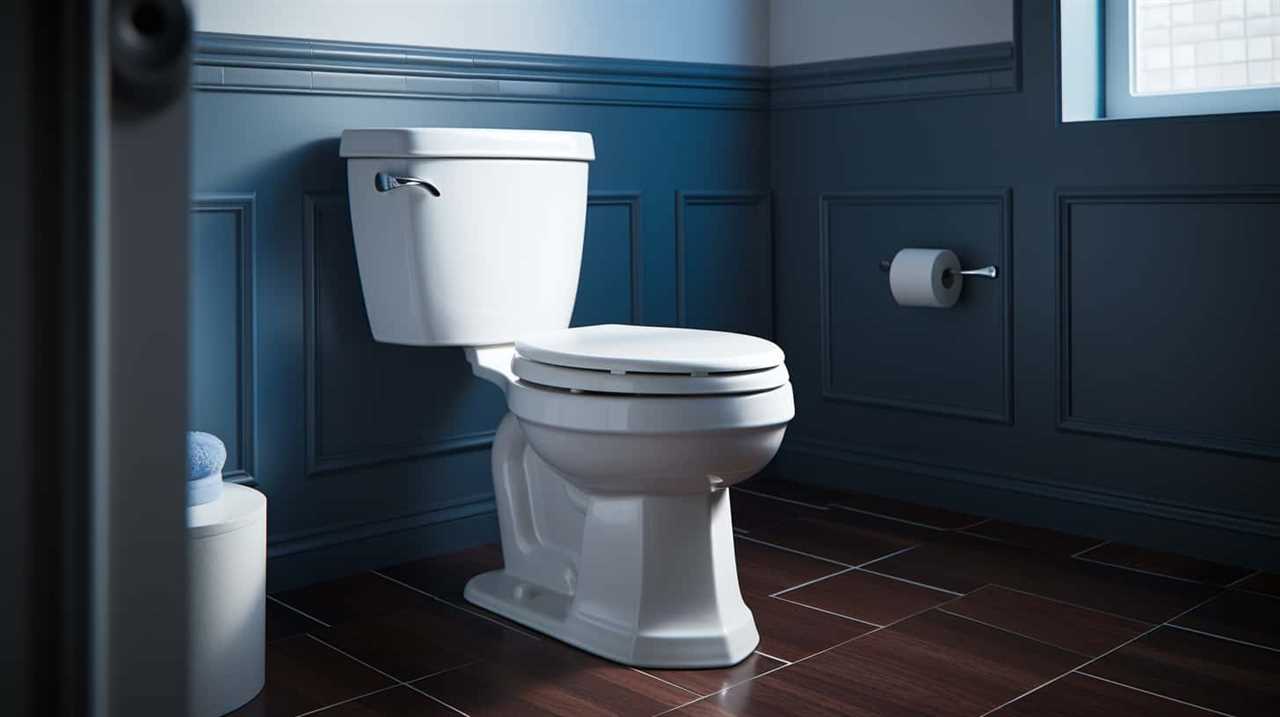
What Were the Hygiene Practices Like in Ancient Greece?
Ancient Greek hygiene practices were quite advanced for their time. They believed in the importance of cleanliness and bathing regularly. Bathhouses, known as ‘thermae,’ were popular gathering places where people could socialize and cleanse themselves. These bathhouses featured hot and cold water pools, steam rooms, and saunas.
In addition to bathing, Ancient Greeks also had a strong focus on medical practices. They believed in the power of herbs, diet, and exercise in maintaining good health. Medical professionals, known as physicians, were highly respected and used various treatments to cure ailments.
How Did Ancient Civilizations Without Toilets Dispose of Their Waste?
Ancient waste disposal methods varied depending on the civilization. Historical perspectives on sanitation reveal that ancient societies without toilets used various methods to dispose of their waste.
Some civilizations used simple pits or trenches, while others constructed elaborate sewer systems. These methods were often crude and unsanitary by modern standards, leading to the spread of diseases. However, they were essential for maintaining some level of cleanliness and preventing waste buildup in populated areas.

Conclusion
In conclusion, the journey through the history of toilets has been a fascinating exploration of human ingenuity and innovation.
From the primitive chamber pots of ancient civilizations to the sophisticated flushing toilets of today, our quest for sanitation has evolved.
Like a river carving its path through time, these inventions have shaped our society, reminding us of the importance of hygiene and the constant pursuit of better living conditions.
The first toilet, although humble in appearance, marked the beginning of a revolution that continues to transform our lives.






